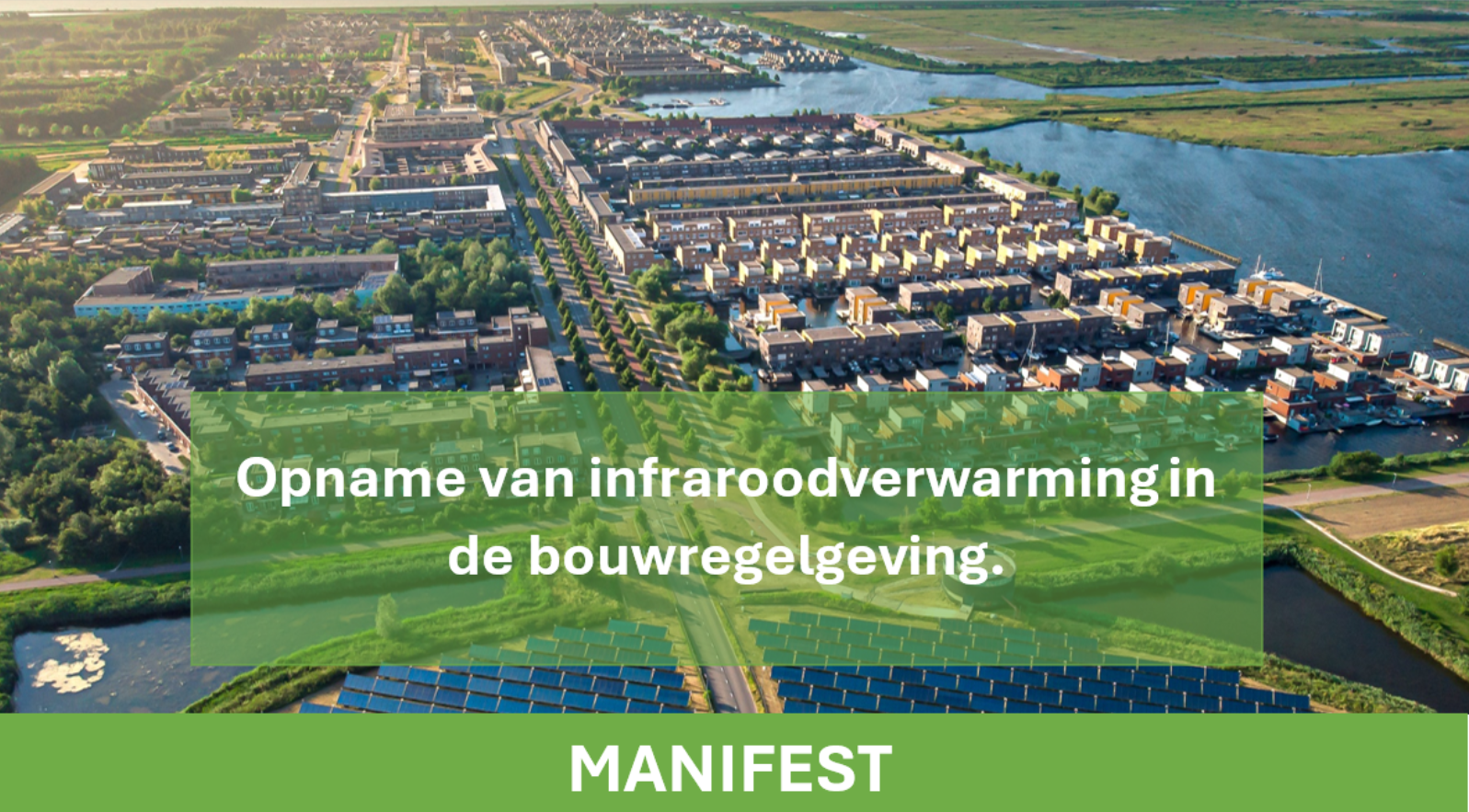NEWS

Manifest – Framework for the application and stimulation of electric infrared heating
By 2050, almost 7 million homes and 1 million other buildings in the Netherlands must be natural gas-free. Up to and including 2030, the Climate Agreement includes an agreement to make 1.5 million homes and other buildings more sustainable. However, the switch from a heating system without natural gas is difficult.
On June 5, 2024, IG Infrared Benelux organized a knowledge event for infrared heating together with Techniek Nederland. During this event, the results of research and practical experiences were shared. The conclusion was drawn that the current building regulations hinder the introduction of promising alternatives, such as infrared heating.
The focus on solutions such as heat networks and (hybrid) heat pumps means that for a significant part of the buildings, sustainability is economically unfeasible or technically complex. The consequences of this are experienced by project developers, construction companies, installation companies and housing associations.
This problem is especially common in modular homes and small apartments. The heat demand is so low that the use of a heat pump does not seem necessary. However, building regulations do not look at absolute energy requirements, but at the heat demand per m². Taking into account absolute energy needs makes alternative heating solutions appropriate, so that on balance more homes can be powered by natural gas in the short term.
Sustainability requires acceleration. This is also possible: electric heating with infrared panels offers a crucial alternative to this acceleration. Under optimal conditions, main heating with infrared is comparable in power to (air/water) heat pumps, while the economic and technical feasibility are more favorable. When implementing electric heating solutions, attention must be paid to grid congestion. Through smart control, the load on the electricity grid from infrared heating can remain manageable, limiting or even avoiding the risks of grid congestion.
Electric heating with high-quality infrared heating systems is a great opportunity for the energy transition and can offer the solution in making homes more sustainable, provided the right preconditions are met. The sector has developed a quality label for infrared panels for this purpose.
Based on recent scientific research and positive practical performance, building physics consultancy Nieman has identified the following obstacles included in this Manifesto:
- It must be unambiguously established under which conditions infrared heating can be applied within the building regulations, so that there is no longer any uncertainty about this among clients and installers.
- The calculation method used to calculate the heating capacity must be adapted to respect the building physics properties of infrared heating. In line with this, this must also be incorporated into the standards for energy performance.
- The total energy requirement must be recognised as a benchmark. In case of low energy requirements, the use of infrared heating must be allowed and encouraged.
The signatories call for:
Together with the sector, to develop a responsible framework for the application and stimulation of electric infrared heating and to break through the obstacle to this promising solution from the point of view of standardisation of the energy performance of buildings.

